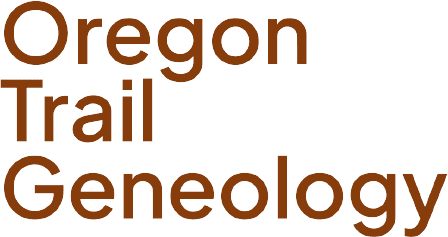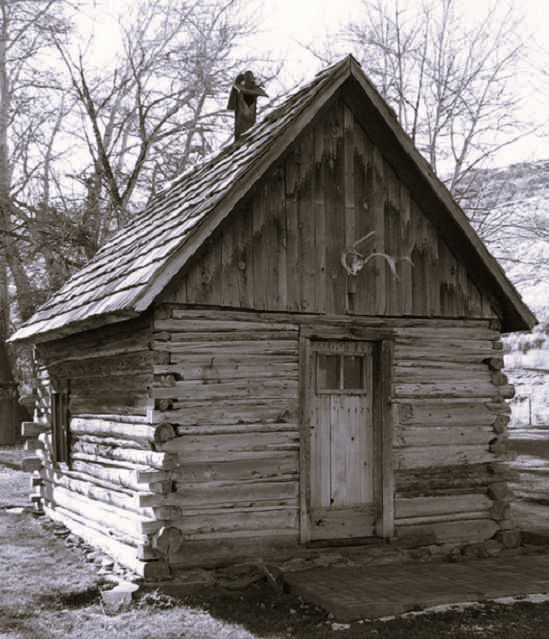In May 1845 the Savannah Oregon Emigrating Society, comprised of 100 armed men, 293 emigrants in 66 wagons, 170 guns and pistols, 398 oxen, 624 loose cattle and 74 mules and horse, departed St. Joseph, Missouri. They were one of three companies that had gathered in St. Joseph to begin the arduous journey across the plains.
At Big Soldier Creek in Kansas the three companies combined into a staggering 233 wagons, 1007 persons (of which 448 were children), 3261 cattle and oxen, and 182 horses. On May 19 they reorganized into three divisions, and each division would take a turn traveling in advance for a week at a time. They were piloted by Stephen Meek, of the soon to be famous Meek Cutoff.1
~All surnames in bold are attached to my own family tree~

Fourteen-year-old Eli Casey Officer walked alongside his family’s wagon on that long journey, experiencing the hardship of the journey, the births and deaths of family members, the awakening of a young man helping his family settle in Oregon. First settling in the Willamette Valley, he and his brother migrated back across the Cascades in 1861. They brought some of the first sheep into the John Day Valley, finding a ready market with the miners who worked the gold rush of Canyon City and surrounding areas.
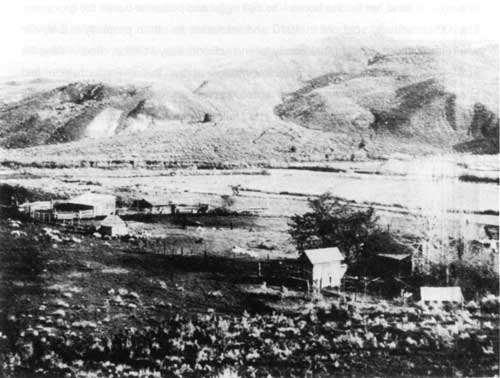
One of nine children of Eli and Martha (Thorpe) Officer, Floyd Lee Officer was born and raised in the Dayville area. From December of 1890, Floyd homesteaded his own land in Butler Basin. He worked on the land for seven years, and secured patent to the 160-acre Butler Basin homestead in January of 1898. That same year, he married Sylvia Fitzgerald, and together they raised eight children, living a rudimentary, hardscrabble existence.
Twice a year Floyd went to The Dalles for supplies. His journeys sometimes lasted up to six weeks. Sylvia Officer rode horseback to Dayville — a child in front and child behind her on the horse — to sell eggs and butter or barter for groceries. The Officers finally sold out in 1910 and relocated to ranch property in Dayville where the children could more easily attend school. Floyd Officer died in Dayville in 1948. Because of his intimate knowledge of the Butler Basin region and interest in fossils, Officer several times served as local guide for Thomas Condon, pioneer paleontologist from The Dalles.2
The part I find most interesting about studying family genealogy are the stories that are attached to them. When reading about the wagon trains venturing westward, I tend to make note of the family names associated with the family I am researching. When looking at land deeds I look at others mentioned in the documents like court officers or witnesses. Reading the early history reveals the people your family may have dealt with, formed business relations with, enjoyed a trip to town for a weekend dance, or whom they married.
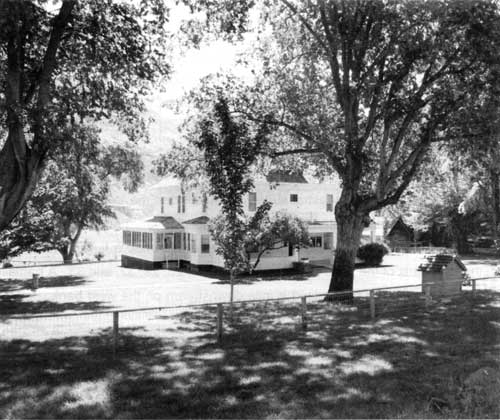
There are clues to your family everywhere. In 1910 James Cant, and his wife Elizabeth Grant, purchased the Officer homestead from Floyd Officer. James sent $5.00 to Radford American Homes for blueprints to the expansive home he would build on the old Officer Property. The Cant Ranch… I’ve been to that home a dozen times… now owned by the National Parks as part of the John Day Fossil Beds. James Cant’s first born, James Alexander Cant, went on to marry Freda Vern Erikson, which leads to more family in the Stirritt’s, Keeney’s, and the Shield’s.
All of these connections arose from my Shield’s family research in the story, “Two Families, Two Hundred Miles Apart…” Obscure bits of history, all leading to the discovery of family.
The web of Dayville families continues…
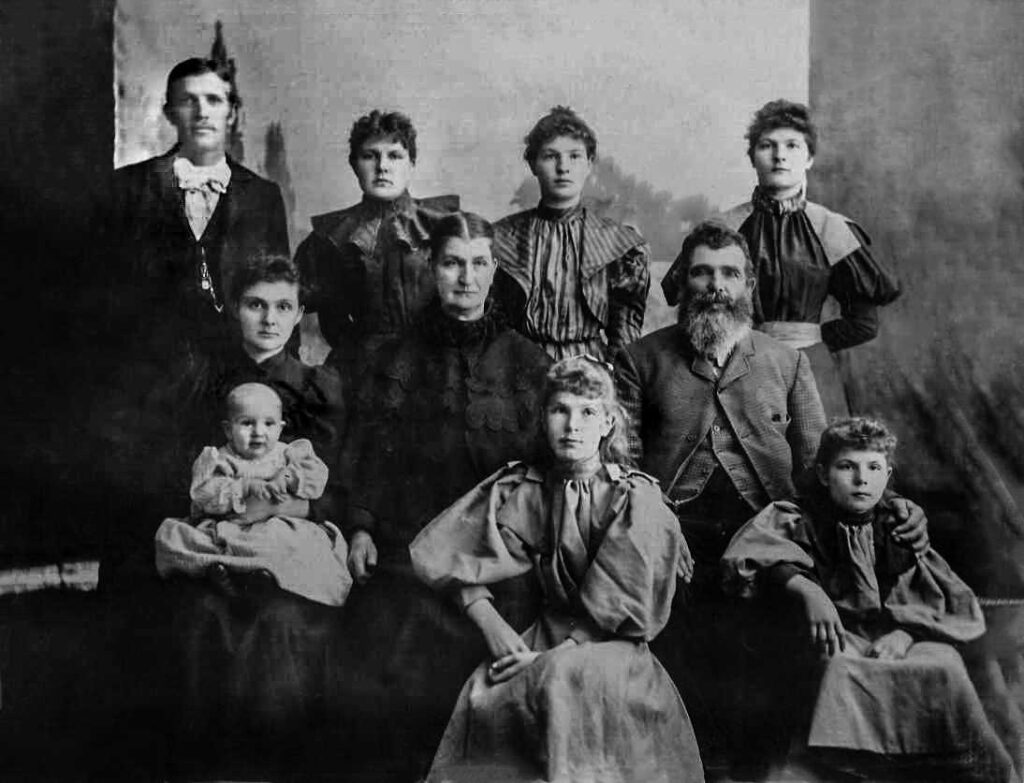
Eli Officer had a sister named Missouri. She was born in a wagon at Three Island Crossing, Glen’s Ferry, Idaho, near the end of their 1845 journey on the Oregon Trail. She married Allan Snyder, both in the family portrait above. Their daughter Alice married Otis Mascall. Alice’s sister Ada married John Damon, whose grandson Carey Weatherford many of you may recognize for his own historical posts and splendid restoration work on old photos.

With Otis Mascal’s brother Lawrence, another striking connection was found. In 1931 Lawrence Mascal married 17 yr. old Lillian Cant, the daughter of James Cant who had purchased the Officer homestead. Lillian’s older sister Christina married Orrin Forest, while Orrin’s sister Lila married Wayne Fisk. Wayne’s great grandfather was Nathan Fisk, who brought his family to Oregon in 1852 and, as my 3x great grandfather, was the inspiration for my years of researching our family history. Wayne’s grandfather Nate Fisk is remembered for opening one of Canyon City’s saloons back in 1880.
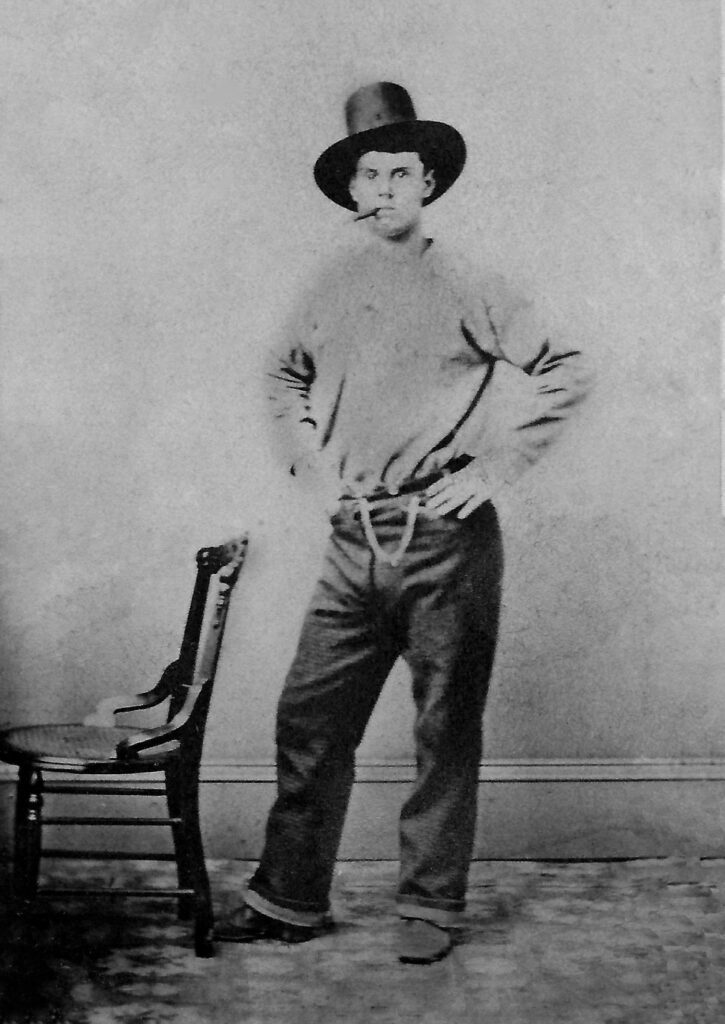
Louisa Officer, daughter of Ely Casey Officer, at age 20 married Elmer “Oliver” Aldrich. Oliver was killed by Indians up on Jackass Mountain, just six months after the wedding. His previously posted story reveals more history in Oregon:
Aldrich Mountain received its name in the 1860s. After Billy Stewart moved into the Murderers Creek country from the Dayville area, he built a cabin and some corrals and bought some purebred shorthorn cattle. ln 1867, 3,500 Paiute Indians came into the area to steal horses and prepare for an Indian War in Idaho. Billy vacated his cabin and took to the rims north of the ranch and watched the Indians kill his cattle and steal his horses. Two Indians finally found his tracks. Billy saw them and deliberately led them through a narrow pass under a cliff. The Indians did not come through the pass, and he escaped.
Later, the Indians spread out and began circling a point on Aldrich Gulch in an attempt to surround sixteen mounted ranchers led by a man named Cummings. The ranchers had been organized to drive the Indians off the range. The ranchers fled when they were confronted by the Indians. A young man named Elmer Oliver Aldrich was killed by the Indians. Later, the ranchers returned and found Aldrich’s mutilated body. Today a rock mound in the gulch marks the spot where Aldrich was killed. The gulch is called Aldrich Gulch and lies on the southwest slope of Aldrich Mountain (USFS Files).
More than a dozen family surnames were revealed. Whether by blood or by marriage, they are all, nonetheless, family. Their collective roles in Oregon Trail and PNW history have become a part of my history. While somewhat stunned by the depth of the history, I’m proud to document it, not just for you, but for my family and my children.
I hope you, too, are finding ways to document your family history, to pass it on to your children and grandchildren. I’m still keeping up with entries in “Tell My Your Life Story, Dad” for my own kids, and hope you go to my little store, as others have, to find the resources to find your own family, write your own story.
If you need help, visit my Services page for ways that I might help.
- 1 – Emigrants to Oregon In 1845 compiled by Stephenie Flora
- 2 – John Day Fossil Beds – Rocks & Hard Places: Historic Resources Study, Chpt. 4
